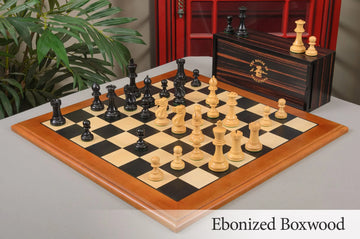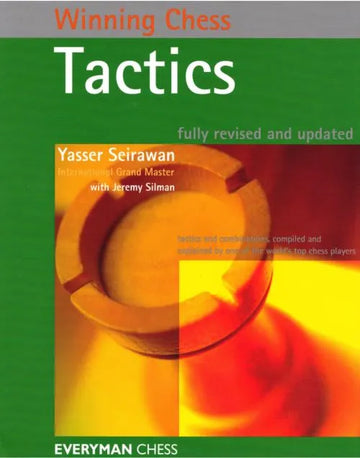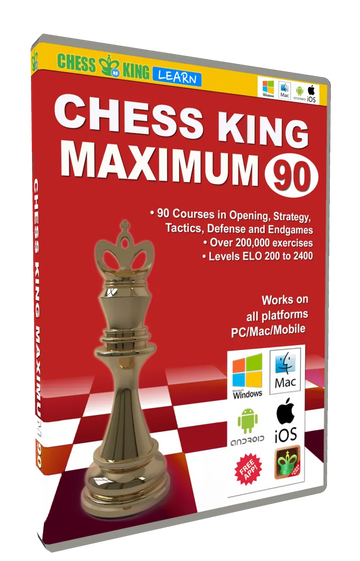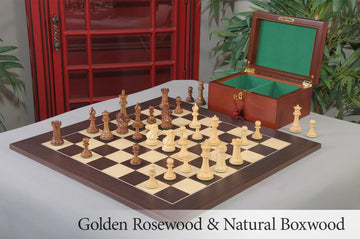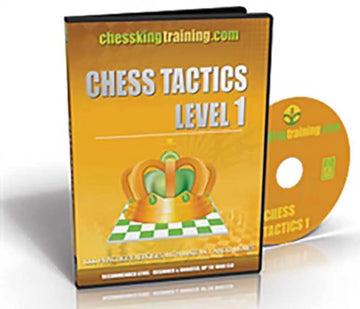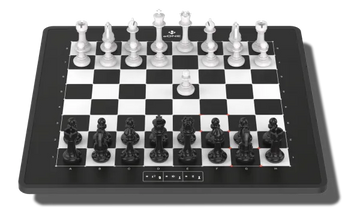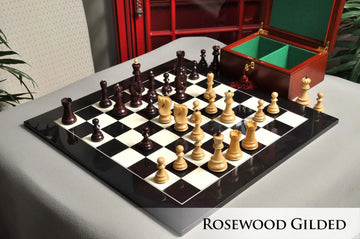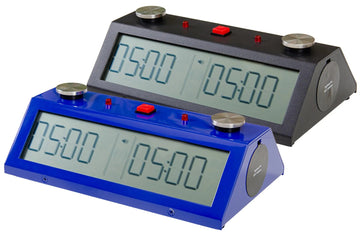Up Your Game With These 10 Chess Tips
In practice, many chess principles can be applied pretty simply. With a few tips, you can quickly change how you approach the game.
When it comes to the most complicated game out there, it is a relief to learn that some of the most complex ideas can sometimes be boiled down to simple ideas, mindsets, and plans.
Here, we have a variety of chess tips. Some focus more on openings, others are related to middle and endgames, and some are actionable summaries of chess principles. Overall, this article is designed for ambitious improvers. So, if you’re trying to find reliable ways to win more chess games you are in the right place.

1. Avoid Repeating Moves
In most cases, making the same move twice wastes time and allows your opponent to improve their position.
This is tied to the chess concept of tempo, which sees each move as a unit of time. If you make the same move twice, you have wasted tempo by using a move but failing to improve your position. This, in effect, gives your opponent an extra move. Tempo is so important that when chess engines play each other, white wins more frequently, simply because it moves first.
Waiting Moves and Draws by Repetition
There are a few instances when you may want to repeat a move. For example, if you want to force a draw by repetition, you will have to make the same move again.
Waiting moves are often used when your opponent has no good moves available. By repeating a move you can sometimes force them into a worse position. This is related to a chess concept called Zugzwang.
2. Always Ask Why
Chess is a game of calculation, but too often we make moves on instinct and overlook obvious threats. Players, especially beginners, get overly focused on their own plans and fail to properly consider their opponent’s move.
The solution: Always Ask Why. Whatever move your opponent makes, consider what their intention is. It may be very simple: they are developing a piece, kicking out my knight, or maybe they've simply blundered. This doesn’t require much calculation. However, the more deeply you can analyze your opponent's intentions and calculate your next moves, the better you will play.
This also helps when you don’t know what move to make. If you don't have a clear plan of attack, consider how you can limit your opponent’s plans. Often, just by considering your opponent's position, it becomes clear what you need to do.
3. Activate All of Your Pieces
Piece activity is another key concept in chess. Simply, it refers to how many squares your pieces control/attack. A classic example is the knight: on the edge of the board it controls at most 4 squares, but in the center, it can control eight. So, a centrally placed knight is a more active piece.
In the opening, developing your pieces is essentially activating them. Your goal should be to have as many active pieces as possible because this will help you control more of the board and create opportunities.

Engage All Pieces for Checkmating Attacks
A good example is checkmating. When you are threatening your opponent’s king, you often need the coordination of many pieces. If you have developed a good threat, often all you need is to engage one more piece to find a checkmate.
Related reading: The Checkmate Patterns Manual
Activate Your King in the Endgame
The king is usually the last piece to activate. Throughout the opening and middle game, you want to protect your king. However, in the endgame, it is often the king’s time to shine. By activating your king quickly you can turn it into an attacking piece, threatening your opponent's pawns and creating checkmating opportunities.
4. Develop with Threats
A classic chess tip: The best moves in chess often do more than one thing. This is the power of many tactical motifs like discovered attacks, double checks, and forks. In the opening, develop your pieces while threatening your opponent's pieces and pawns. Effectively, this forces your opponent to move twice (see tip number one) and allows you to get quicker development.
Further Reading: 100 Tactical Patterns You Must Know
Attacking an Exposed Queen
A common example of this is when your opponent gets their queen out too early. By threatening it multiple times as you develop your pieces you can often get a really strong position as your opponent has no time to develop.
5. Control Open Files
An open file is a vertical passage on the chessboard free from pawns. This is often where rooks are strongest in middle and endgames. By placing a rook on an open file, they control 8 squares. This allows you to defend these squares and create more threats on your opponent's pieces.
Of course, your opponent is not likely to make it easy for you. Open files will often be contested with rooks and queens. This is why you may aim to eventually create a battery of two rooks on an open file, creating threats for back-rank checkmates and placing a rook on the 7th rank. This can set you up for a favorable endgame.

In this example, you can see that white has strong control of an open file and is also creating pressure on the 7th-rank pawns. White attacks so many squares that there are simply too many threats for Black to deal with even though the material is the same.
Related reading: Conceptual Rook Endgames Workbook
6. Exchange Bad Pieces, Keep Good Ones
It sounds obvious, but for many players identifying a good piece and a bad one is not that easy. In general, knowing when to exchange can be tricky.
Asking these questions can help you to identify whether a piece is good or bad:
- If a bishop, is it on an opposite color to the majority of pawns? Good bishops can move between pawns freely and control opposite squares to your pawn structure.
- Is the piece active? How many squares does it control?
- Can the piece be easily ‘kicked’? In other words, can your opponent force it back to a worse position?
- Is the piece trapped or blocked in? These pieces tend to be inactive and if given the opportunity, it is wise to trade them.
There are many other things to consider depending on the position. For example, if you are up material exchanges are usually favorable because they help you to simplify the position.
7. Scan for Forcing Moves
Scanning a chessboard is an important skill in itself. Before making calculations, you need to be able to identify threats and weaknesses in the position. To narrow this down to something practical, look for forcing moves. This refers to threats to which your opponent must respond. For example, checks.
Of course, they are not always available and they are not always the best move. However, in many cases forcing moves allows you to put your opponent under pressure. By forcing them to make often suboptimal moves, you can quickly weaken their position and create opportunities for attack.
Very often, checkmating sequences involve a series of forcing moves that trap the king.
8. Check for King Safety
Many players neglect king safety when playing and studying chess. You can prevent a lot of middlegame checkmates simply by being aware of how well-protected your king is.
Castling is usually the first step. But too often people will assume their castled king is safer than it is. Always be aware of your opponent putting pressure on the square surrounding the king.
Identify the possibility of sacrifices. Examples like the Greek Gift and the Fishing Pole Trap are sneaky ways in which an opponent can weaken the castled king.

White's king looks relatively safe in this position, so they may be tempted to take the offered knight. However, if they do so the position is losing. The pawn will force the knight away and the threat of the rook and black's other pieces will soon undermine the king's safety.
9. Consider Pawn Structure Weaknesses
Pawn structure is another aspect of chess that is often neglected at the beginner and intermediate levels. However, considering your pawn structure and how it will translate to an endgame can make a drastic difference in how many games you win. The art is spotting a weakness or advantage before it develops on the board.
Most intermediate players will be aware that isolated, backward, and doubled pawns are positional weaknesses or targets. These kinds of pawns can often be captured or need to be protected by other pieces.
To avoid this, you need to calculate how moves will affect your pawns. More specifically, you can:
- Avoid overextending your pawns. By pushing your pawns too far forward, you often create isolated and backward pawns that are difficult to defend.
- Create solid central pawn structures by supporting central pawns with other pawns. Central pawns will often be under attack, so they need to be supported.
- Think carefully before pawn breaks or committal pawn moves
Related Reading: Key Concepts of Chess – Pawn Structures
10. Always Have A Plan
For our final chess tip, let's look at how to create a plan. Too often, we think about a game of chess in terms of moves instead of long-term plans. As much as board awareness and calculation are key skills in chess, it is essential to know how to plan.
Opening Plans
In the opening, the objective is to develop your pieces and get your king out of the center. Your plan should involve doing this in such a way that the middle game will be favorable to you. Planning in the opening involves knowing some theory, but considering carefully how you will control the center, develop your pieces to activate squares, and create a strong pawn structure.
Middlegame Plans
In the middlegame, your plan should be based on an analysis of your strengths and weaknesses. These imbalances may be small: slightly better pawn structure, more active pieces, or a safer king. By considering them you can create a plan to convert them into a winning advantage.
Endgame Plans
Even though there are fewer pieces on the board, endgames are deceptively complex. Considering the pawn structures carefully, counting moves, and understanding the different types of endgames can help you develop a good plan.
Related Reading: Key Elements of Chess Strategy

